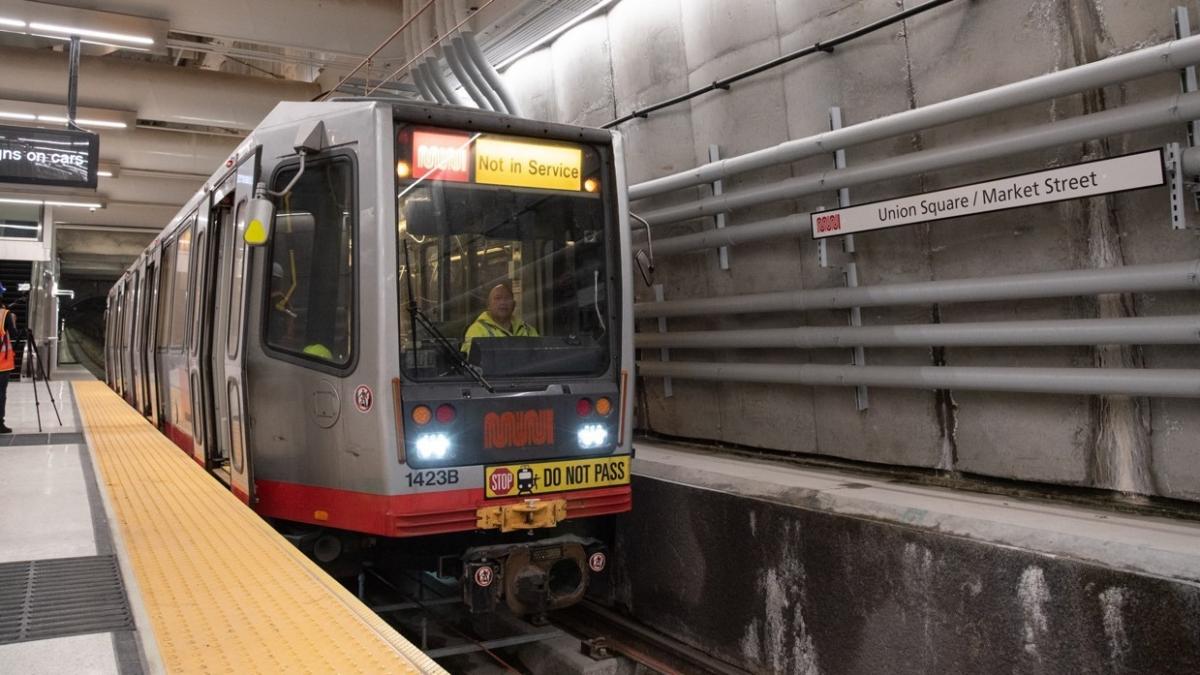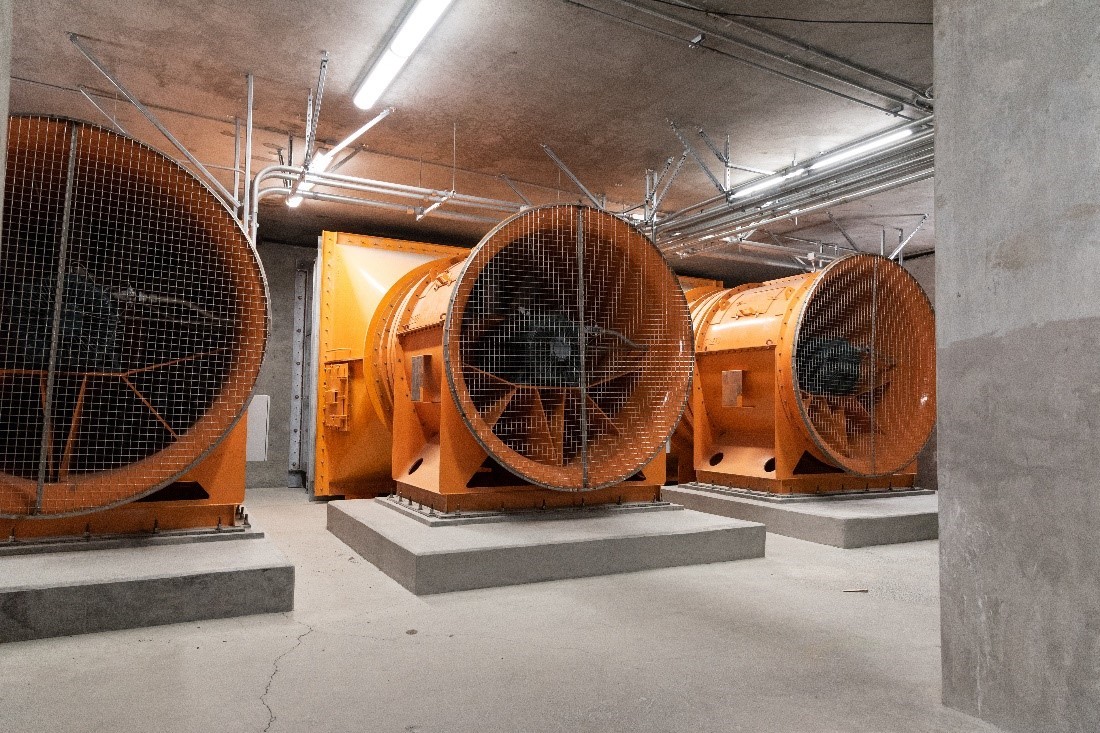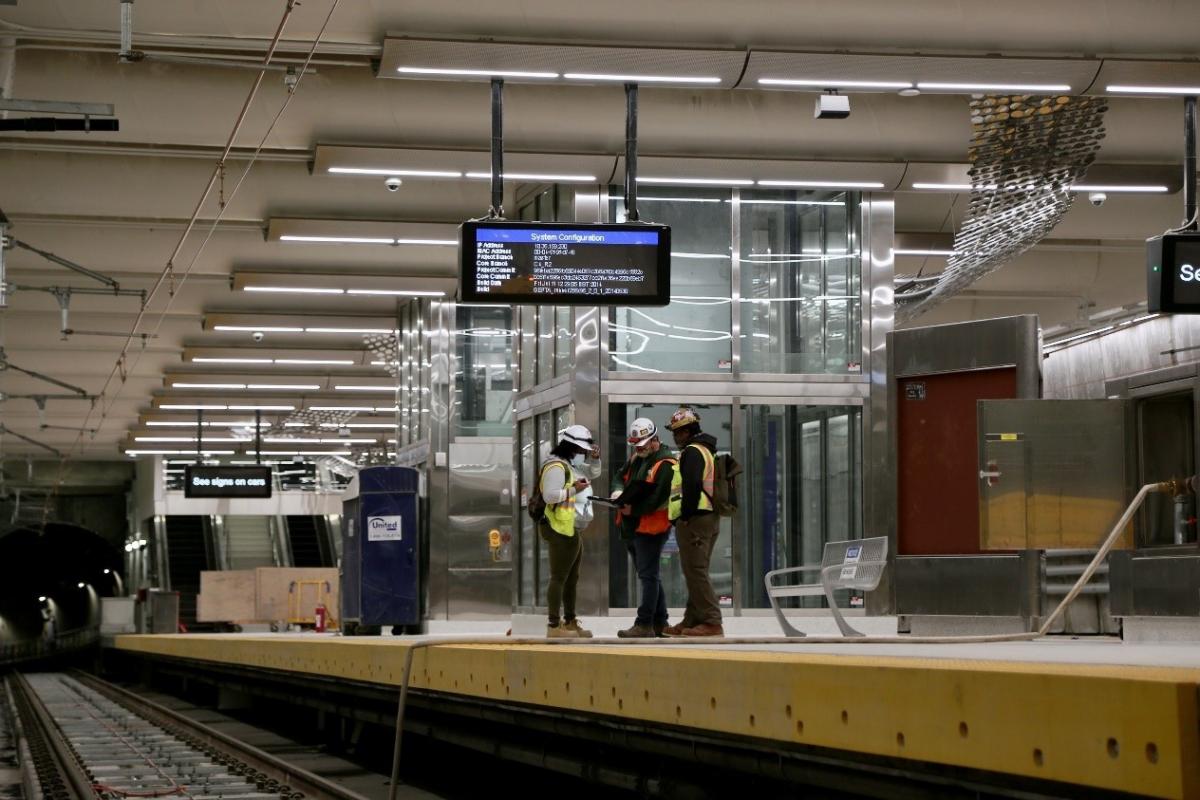By Enrique Aguilar

Light rail vehicle entering Union Square station during testing
The Central Subway Project is moving toward our goal of “substantial completion,” paving the way for the start of critical testing and certification of project elements such as station escalators, elevators, trackwork and radio communications.
The next project stage will include rail activation to begin testing train operations, train control and other integral systems. The project team is identifying and resolving the outstanding issues with the contractor that will lead to recognition work performed on infrastructure elements as complete. Once this step is achieved, we will begin the rail activation process that will ensure the automatic train control and other systems are ready for the start of revenue service in 2022, approximately one year from now.
The project has reached a number of significant milestones, including the laying of track along the route, the completion of train stations, public art installations and the reopening of streets closed to vehicle traffic, including Washington Street near San Francisco’s Chinatown, reopened for westbound traffic in April.
Restoration of access to streets has come at a critical time, alleviating congestion as the city continues to open up and more people are visiting and travelling through the neighborhood. With students returning to in-person learning, we also deployed community ambassadors to strategic locations along Washington Street to assist school staff, parents and children navigate to Gordon J. Lau Elementary School.
The Testing Phase
The process of testing complex systems and training personnel to operate and maintain them typically takes around a year for transit projects of this magnitude. This phase will include synchronizing the automatic train control systems, testing radio and data communication systems, and evaluating customer information systems. Experience with previous major construction projects has allowed us to apply lessons learned to the project’s testing phase, which will ensure successful project delivery and start of service next year. These steps will also complete the new rail line’s integration with the overall Muni network.
The next phase will assess the following systems.
Life Safety Systems: The installation and proper performance of safety equipment are critical to mitigate the impact of incidents inside Muni stations and subway tunnels. Fire sprinklers installed in the tunnels will be tested to ensure they respond when fire alarms are activated. Adequate tunnel ventilation is important during an incident where the ventilation system must flush toxic fumes out of the tunnels.

Emergency ventilation fans at Yerba Buena Moscone Station
The Transportation Management Center will conduct safety drills and develop contingency plans for emergency passenger evacuation and to provide for first responder access to any incident that might arise in the tunnel. To ensure operators, passengers and emergency services can exit or safely access the tunnel during an emergency, handrails, lighting, walkways and safety signage in the tunnels must all meet local and federal safety requirements.
Automatic Train Control: When light rail vehicles (LRVs) enter the Central Subway, they will utilize an automatic train control system known as ATCS. Testing will verify that the ATCS guides the automatic movement of LRVs through the tunnels and carries out minimum safety separation between trains based on safe braking distances from the last verified position of the rear of a preceding train. Proper functioning of the ATCS also allows vehicles to move through the tunnel faster than possible when vehicle controls are performed manually by train operators.
Radio Communication and Customer Information: Radio equipment includes a computer-aided dispatch and automatic vehicle location system to improve management of Muni service from the Transportation Management Center. Delivery of data from trains helps analyze how service is delivered and how to respond to issues with trains. The customer information system improves communications system-wide by expanding audio and visual “next stop” announcements on Muni trains in the subway and on the surface. These announcements are helpful to customers and particularly useful for people with hearing and vision disabilities.
Customers rely on Muni’s customer information system to plan trips or receive real-time service alerts. Testing of this system will include verifying that Metro station audio announcements and displays are working properly.

Workers testing customer information displays at Union Square/Market Street Station
Once in operation, the Central Subway will connect directly to some of San Francisco’s most densely populated communities, including Visitacion Valley in the southeast, the Bayview and Dogpatch neighborhoods, and the city’s center. We thank our community partners in the Chinatown, Union Square, Yerba Buena and SoMA neighborhoods for their patience and understanding during the project’s construction phase.
Published August 04, 2021 at 07:13AM
https://ift.tt/3xmDXax
Comments